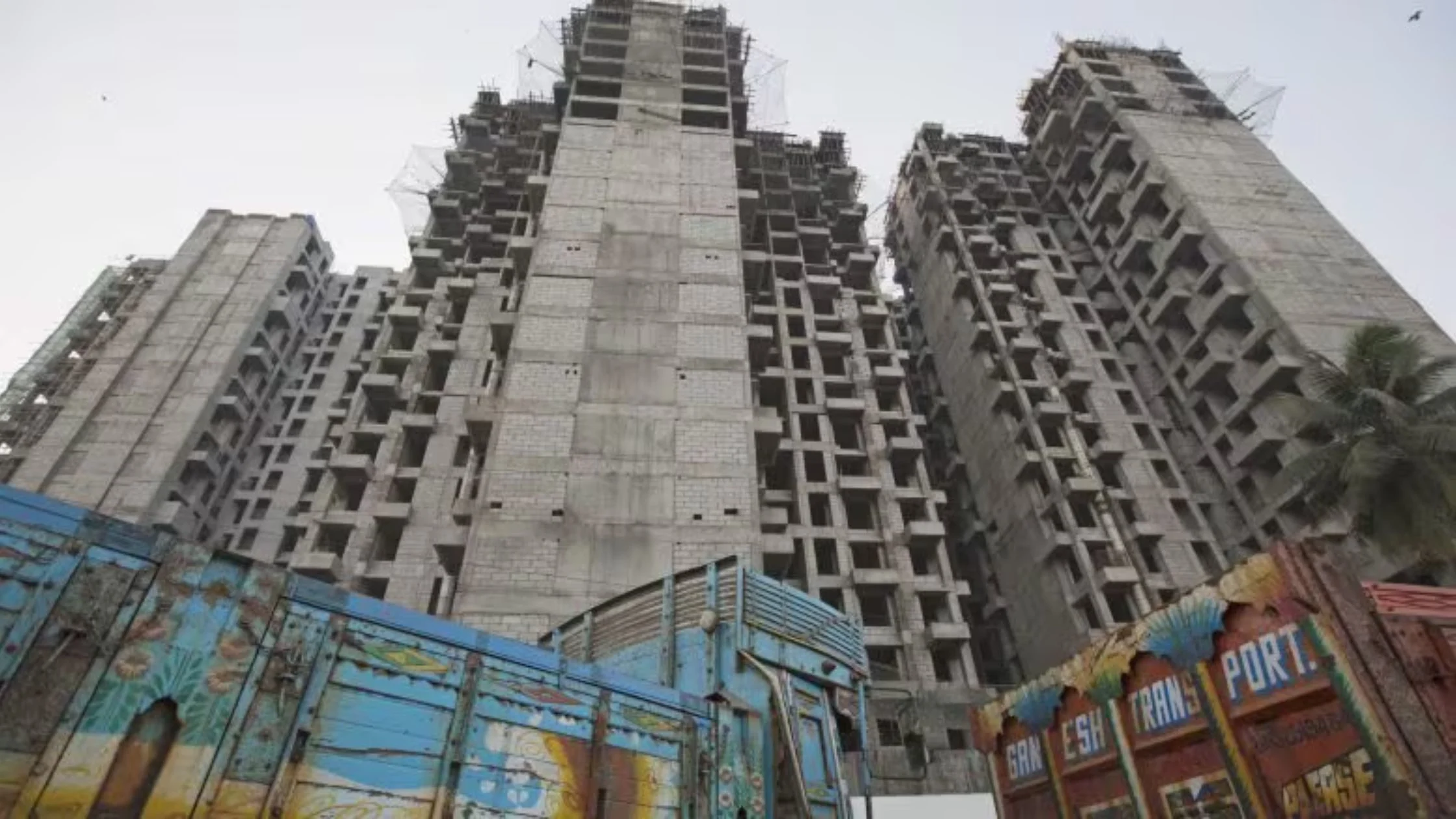Table of Content
- GST 2.0 Reforms: What They Mean for Real Estate
- Broader Scope of Next-Gen GST Reforms
- Summary Table: GST Rate Reductions Impacting Real Estate
- Cement GST Cut: A Long-Awaited Move for Real Estate
- Key Material & Input Benefits for Real Estate
- Industry and Consumer Sentiment
- Service-Side Implications
- Wider Economic Impact of Next-Gen GST Reforms
- Impact on Developers
- Impact on Homebuyers
- Challenges and Exceptions
- Conclusion
The GST Council’s September 3 meeting marked the beginning of a new era for India’s tax regime, widely being referred to as GST 2.0. These reforms, officially branded as Next Gen GST Reforms, are aimed at simplifying tax slabs, rationalising rates, and creating a more transparent and predictable system. For the real estate sector, this is a landmark development, with benefits expected to flow across construction, interiors, and home appliances.
Affordable housing, in particular, stands to gain momentum as the reforms lower input costs, improve project viability, and make homes more accessible to buyers. Beyond cost savings, GST 2.0 signals a broader government push toward structural reform, economic growth, and support for initiatives like the Housing for All mission.
GST 2.0 Reforms: What They Mean for Real Estate
At the core of GST 2.0 is a move toward simplified taxation with just two slabs, 5% and 18%. Previously, multiple slabs caused confusion, compliance challenges, and disputes over classification. The latest reforms seek to resolve these issues while also promoting investor confidence.
Key benefits of Next Gen GST Reforms for the housing and construction industry include:
- Simplified compliance: Businesses can manage invoices and file returns more easily.
- Fewer disputes: Harmonised slabs reduce litigation over tax classification.
- Predictable regime: Developers and investors can plan projects with greater certainty.
- Alignment with national goals: Supports initiatives like Ease of Doing Business, Ease of Living, and affordable housing.
By making GST a facilitator rather than a burden, these reforms are designed to stimulate both supply and demand in the real estate market.
Also Read: UP Cabinet Limits Stamp Duty on Partition Deeds to ₹5,000
Broader Scope of Next-Gen GST Reforms
The GST Council’s recent changes go well beyond cement. They are part of a strategic shift to streamline the GST regime into a simpler, more transparent framework.
Currently, GST has multiple slabs that complicate compliance and lead to disputes over classification. To address this, the Council is moving towards a two-slab system 5% and 18% that will apply across most goods and services. This rationalisation will help in several ways:
- Simplifying compliance: Businesses will find it easier to file returns and manage invoices under a leaner system.
- Reducing disputes: A two-slab structure minimises confusion over classification, leading to fewer litigations.
- Encouraging investment: A predictable tax regime attracts both domestic and foreign investors into sectors like housing and infrastructure.
- Supporting national goals: By making taxes simpler and fairer, the reforms reinforce larger initiatives such as Ease of Doing Business and Ease of Living.
These changes are precisely why economists call them Next Gen GST Reforms they go beyond revenue collection and actively support economic development.
Summary Table: GST Rate Reductions Impacting Real Estate
|
Item/Service |
Old Rate |
New Rate |
Impact |
|
Cement |
28% |
18% |
Major cost savings |
|
Sand lime bricks, stone inlay |
12% |
5% |
Lower basic material costs |
|
Plywood, fibre/particle boards |
12% |
5% |
Cheaper wood, eco-friendly options |
|
Handcrafted stone/wood products |
12% |
5% |
Affordable luxury/interior décor |
|
Tableware/kitchenware/household articles |
12% |
5% |
Lower cost for amenities |
|
Bamboo/cane/rattan furniture |
12% |
5% |
Promotes sustainable, aesthetic furnishing |
|
Air-conditioning machines, TVs, dishwashers |
28% |
18% |
Lower appliance installation cost |
|
Works contract (earthwork for government) |
12% |
18% |
Higher tax mainly on government contracts |
Cement GST Cut: A Long-Awaited Move for Real Estate
For years, industry bodies such as CREDAI and NAREDCO have been lobbying for a reduction in cement’s GST rate. Despite being a critical infrastructure material, cement was taxed at the highest slab of 28%, putting it in the same bracket as luxury goods.
Cement typically makes up 20–25% of the overall construction cost in a residential project. By moving cement into the 18% GST slab, the Council has addressed one of the biggest pain points for developers. The cost savings generated here can be substantial. For instance, in a mid-sized housing project, even a 10% reduction in cement-related taxes can translate into crores of rupees in savings.
These benefits are likely to be passed on, at least partially, to buyers. Affordable housing projects, which operate on tight margins, stand to gain the most. In effect, this cement rate cut directly aligns with the government’s broader policy goal of Housing for All. It also underscores how Next gen GST Reforms are not just about tax efficiency but also about driving social outcomes like housing accessibility.
Key Material & Input Benefits for Real Estate
While cement has taken the spotlight, the Council has also reduced GST rates on a variety of construction and household materials. These include:
- Sand lime bricks and stone inlay work: GST reduced from 12% to 5%
- Plywood, fibre and particle boards, bamboo-based products: 12% to 5%
- Handcrafted stone and wood items: 12% to 5%
- Furniture, tableware, and kitchenware: 12% to 5%
- Appliances such as ACs, TVs, and dishwashers: 28% to 18%
The cumulative effect of these cuts is significant. Developers now save on both core construction materials and interior finishing products. For buyers, this translates into lower property costs and reduced expenditure on interiors and household appliances.
By extending benefits beyond cement, these Next Gen GST Reforms ensure that the affordability factor is addressed not just at the construction stage but throughout the home-buying journey.
Also Read: UP CM Yogi Adityanath Seeks New Law to Replace 1860 Societies Registration Act
Industry and Consumer Sentiment
The timing of these reforms just ahead of the festive season adds another dimension. In India, festivals such as Diwali are peak times for property purchases, often considered auspicious by buyers. Lower GST rates now give homebuyers additional confidence to make investment decisions.
Developers are equally optimistic. Many are expected to announce festive discounts and promotional schemes, passing on GST-related benefits to attract buyers. For the industry, which has weathered challenges ranging from liquidity crises to pandemic slowdowns, the reforms provide much-needed momentum.
The real estate sector is also a massive generator of employment, directly and indirectly supporting millions of jobs. A surge in housing demand, driven by affordability, will strengthen the employment landscape as well. This underscores how Next Gen GST Reforms extend their impact beyond tax policy into the larger economic and social fabric.
Service-Side Implications
One aspect of the reform that has raised questions is the increase in GST on works contract services for government projects from 12% to 18%. While this could increase project costs for public sector initiatives, the Council’s rationale lies in harmonising rates and removing anomalies.
For the private sector, however, the lower input costs from cement and other materials far outweigh this increase. Affordable housing projects, in particular, will remain viable, ensuring that the Next gen GST Reforms do not derail but instead strengthen the overall sectoral growth trajectory.
Wider Economic Impact of Next-Gen GST Reforms
The latest reforms carry ripple effects across multiple dimensions of the economy:
- Affordable housing supply: Developers now have stronger incentives to launch budget-friendly projects, easing urban housing shortages.
- Litigation reduction: The simplified slab structure will significantly cut down tax-related disputes, saving time and resources.
- Green material adoption: Lower GST on bamboo and crop-residue boards promotes sustainable and eco-friendly construction.
- Tier 2 and Tier 3 city growth: Lower costs make it more feasible for developers to expand into emerging urban centres, decentralising growth from metros.
- Boost to consumer spending: Lower GST on household goods such as appliances and furniture improves affordability for end-users, creating a positive consumption cycle.
In essence, Next Gen GST Reforms function as a catalyst for broad-based growth, affecting not just real estate but also allied industries like manufacturing, retail, and logistics.
Impact on Developers
Lower GST rates on core construction materials and household goods provide developers with substantial cost relief. Affordable housing projects, which operate on tight margins, can now be more viable and profitable.
The reforms also incentivise developers to launch more projects in Tier 2 and Tier 3 cities, where costs and margins are crucial for expansion. With a predictable tax structure and reduced compliance burden, developers can plan long-term investments with confidence, leading to increased housing supply across price segments.
Impact on Homebuyers
For homebuyers, GST 2.0 offers a tangible improvement in affordability. The reduction in tax rates on construction materials, interiors, and appliances lowers the total cost of homeownership. Buyers can also benefit from better-quality interiors without stretching their budgets, thanks to reduced GST on furniture, kitchenware, and appliances.
Affordable housing, in particular, sees a boost, as developers can now pass on part of the savings to buyers. Overall, Next Gen GST Reforms directly contribute to making the dream of owning a home more attainable for a wider population.
Challenges and Exceptions
While the overall impact is positive, there are some exceptions:
- Works contract services for government projects now attract 18% GST (up from 12%), which may increase costs for public sector initiatives.
- Developers must still balance affordability, compliance, and project timelines to fully leverage the benefits of GST 2.0.
Despite these exceptions, the reforms provide a net benefit to private housing projects, especially in the affordable and mid-market segments.
Conclusion
The GST Council’s decision to reduce the tax rate on cement is more than a cost-saving measure. It marks the beginning of a comprehensive reform era under the banner of Next Gen GST Reforms.
For developers, the cut means lower input costs and higher project viability. For homebuyers, it translates into affordable housing and reduced expenditure on interiors and essentials. For the economy, it promises more investment, job creation, and sustainable growth.
By tying taxation policy to larger developmental objectives such as Housing for All, Ease of Living, and sustainability, the government has signaled a new direction for GST. If implemented consistently, these reforms could reshape India’s real estate and infrastructure landscape over the next decade, making housing more accessible and the economy more resilient.
The message is clear: GST is no longer just a revenue tool; it is becoming a driver of growth, affordability, and social equity. That is the true essence of Next gen GST Reforms.




_1767164061.webp)


Ans 1. GST 2.0, also called Next Gen GST Reforms, is the government’s effort to simplify India’s tax system by rationalising tax slabs, reducing compliance burdens, and making the system more transparent and predictable.
Ans 2. The reforms lower GST on key construction materials, interiors, and appliances, reducing overall project costs, improving project viability, and making housing, especially affordable housing, more accessible to buyers.
Ans 3. GST 2.0 simplifies taxation into two main slabs: 5% and 18%. This replaces the multiple, confusing slabs that previously existed.
Ans 4. Under GST 2.0, key real estate inputs and home appliances see reduced rates: cement and appliances from 28% to 18%, and construction/interior materials like bricks, plywood, handcrafted wood, furniture, and kitchenware from 12% to 5%.
Ans 5. Cement accounts for 20–25% of residential construction costs. Lowering its GST from 28% to 18% significantly reduces project costs, benefiting both developers and homebuyers, especially in affordable housing.
Ans 6. Homebuyers benefit from lower total property costs, cheaper interiors and appliances, and improved affordability for budget-friendly and mid-market housing projects.
Ans 7. Developers enjoy cost relief, simplified compliance, and improved project viability. It encourages them to launch more projects in Tier 2 and Tier 3 cities, expanding housing supply.
Ans 8. Yes. Works contract services for government projects now attract 18% GST (up from 12%), which may increase costs for public sector initiatives.
Ans 9. The reforms align with goals such as Housing for All, Ease of Doing Business, Ease of Living, sustainable growth, and increased employment in the construction and allied industries.
Ans 10. Yes, particularly in affordable housing projects. Developers can pass on savings from reduced GST on construction materials and interiors, lowering overall property costs for buyers.